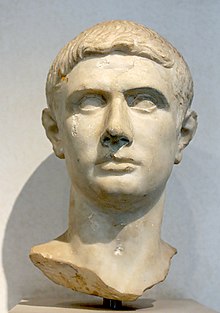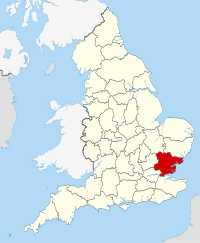|
England. Essex. Walthamstow (London Area). Conder Token
British Copper Company – Brutus
Non-dated circa 1809-1810 Copper Half Penny Conder Token 29mm (9.01 grams)
Reference: Withers# 624
BRUTUS, Bare head of Lucius Junius Brutus left.
Britannia seated left holding olive branch and trident, a shield at her side. Initials BCC (British Copper Company) on the ground below; all within an oak-wreath.
The Brutus token was issued c.1809 – 1810 by the British Copper Company at Walthamstow in Essex. The principal die engraver was most likely Thomas Wyon the elder (1767–1830). About 1796, Thomas went into business in Birmingham with his brother Peter as a general die-engraver. From 1800, he carried on his business from London, where he engraved many dies for tokens, and in 1816 he was appointed chief engraver of the seals. He died on 18th October, 1830.
These tokens were issued by the British Copper Company, a Welsh based company which, in 1808, bought the Walthamstow site beside the River Lea. Walthamstow is now a suburb of north east London. The copper was smelted in “Landore” near Swansea in South Wales and brought by barge around the south coast up the Thames and the Lea to the mill. The copper ingots were then rolled into thin sheets which were sent all over the country to be stamped into coins. The main purpose of the BCC would have been to sell its copper, whether in the form of tokens, or sheets of metal. These penny and half penny tokens were not issued exclusively for use in Walthamstow, the halfpennies in particular do not bear the name of a place where they could have been redeemed except the very tiny BCC found on the ground by Britannia’s shield. The copper rolling mill buildings at Walthamstow were converted into a pumping station in the 1860’s and were later incorporated, by Thames Water, into a large water treatment works.
These 19th Century tokens were issued at the beginning of that century because official coins were in short supply. The cumbersome “Cartwheel” issues had proved short-lived, the twopence was discarded and the penny, halfpenny and farthing were reduced in size. Even so, the supply of these coins did not keep pace with the demand and by 1811, penny, halfpenny and farthing tokens were being manufactured. These tokens, tolerated by the government (in spite of being illegal), became extremely popular and were accepted locally as a regular medium of exchange. These tokens can in a way be considered to be coins, as that is what their main function was. They were all banned following the great re-coinage of 1816.
You are bidding on the exact item pictured, provided with a Certificate of Authenticity and Lifetime Guarantee of Authenticity.
Conder Tokens, also known as 18th Century Provincial Tokens, are a form of privately minted token coinage struck and used during the latter part of the 18th Century and the early part of the 19th Century in England, Anglesey and Wales, Scotland, and Ireland.
The driving force behind the need for token coinage was the shortage of small denomination coins for everyday transactions. However, the demand was fueled by other factors such as the Industrial Revolution, population growth, and the preponderance of counterfeit circulating coins. Because the government made little effort to ameliorate this shortage, private business owners and merchants took matters into their own hands, and the first tokens of this type were issued in 1787 to pay workers at the Parys Mine Company. By 1795, millions of tokens of a few thousand varying designs had been struck and were in common use throughout Great Britain.
Collecting Conder tokens has been popular since shortly after they were first manufactured, resulting in the availability today of many highly preserved examples for collectors. The demarcation of what is or is not considered a Conder token is somewhat unclear; however, most collectors consider Conder tokens to include those indexed originally by James Conder or later by Dalton & Hamer.
Walthamstow is a major district in North East London and is part of the London Borough of Waltham Forest. It is located 7.5 miles (12.1 km) North East from Charing Cross. Historically in the county of Essex, it significantly increased in population as part of the suburban growth of London and was incorporated as the Municipal Borough of Walthamstow in 1929 before becoming part of Greater London in 1965. Walthamstow is situated between the North Circular Road to the north, the Lea Valley and Walthamstow Reservoirs to the west, and Epping Forest to the east.
 Marcus Junius Brutus (early June, 85 BC – late October, 42 BC), often referred to as Brutus, was a politician of the late Roman Republic. After being adopted by his uncle he used the name Quintus Servilius Caepio Brutus, but eventually returned to using his original name. Marcus Junius Brutus (early June, 85 BC – late October, 42 BC), often referred to as Brutus, was a politician of the late Roman Republic. After being adopted by his uncle he used the name Quintus Servilius Caepio Brutus, but eventually returned to using his original name.
He is best known in modern times for taking a leading role in the assassination of Julius Caesar.
 Essex is a county in the south-east of England, north-east of London. One of the home counties, it borders Suffolk and Cambridgeshire to the north, Hertfordshire to the west, Kent across the estuary of the River Thames to the south, and London to the south-west. The county town is Chelmsford, the only city in the county. For government statistical purposes Essex is placed in the East of England region. Essex is a county in the south-east of England, north-east of London. One of the home counties, it borders Suffolk and Cambridgeshire to the north, Hertfordshire to the west, Kent across the estuary of the River Thames to the south, and London to the south-west. The county town is Chelmsford, the only city in the county. For government statistical purposes Essex is placed in the East of England region.
There are three definitions of the extent of Essex, the widest being the Ancient County, the more usual being the smaller Ceremonial County and smallest being the administrative county – the area administered by the County Council and which excludes the two unitary authorities of Thurrock and Southend-on-Sea.
The Ceremonial County occupies the eastern part of what was, during the Early Middle Ages, the Kingdom of Essex. As well as rural areas, the county also includes London Stansted Airport, the new towns of Basildon and Harlow, Lakeside Shopping Centre, the port of Tilbury and the borough of Southend-on-Sea.
|









 Marcus Junius Brutus (early June, 85 BC – late October, 42 BC), often referred to as Brutus, was a politician of the late Roman Republic. After being adopted by his uncle he used the name Quintus Servilius Caepio Brutus, but eventually returned to using his original name.
Marcus Junius Brutus (early June, 85 BC – late October, 42 BC), often referred to as Brutus, was a politician of the late Roman Republic. After being adopted by his uncle he used the name Quintus Servilius Caepio Brutus, but eventually returned to using his original name. Essex is a county in the south-east of England, north-east of London. One of the home counties, it borders Suffolk and Cambridgeshire to the north, Hertfordshire to the west, Kent across the estuary of the River Thames to the south, and London to the south-west. The county town is Chelmsford, the only city in the county. For government statistical purposes Essex is placed in the East of England region.
Essex is a county in the south-east of England, north-east of London. One of the home counties, it borders Suffolk and Cambridgeshire to the north, Hertfordshire to the west, Kent across the estuary of the River Thames to the south, and London to the south-west. The county town is Chelmsford, the only city in the county. For government statistical purposes Essex is placed in the East of England region. 




